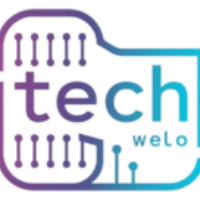Most Useful Data Analysis Tools | Methods And Techniques Simplified
Data analysis is key for businesses and professionals to find valuable insights in their data, helping them make smarter decisions and predictions. In today’s data-driven world, using data analysis has become more important than ever for making better decisions, connecting with audiences, and managing projects effectively. One way to achieve these goals is through data analysis tools.
What Are Data Analysis Tools?
Data analysis tools are software and applications that help professionals examine data sets to uncover trends, insights, and patterns. Data analysis tools include features like maps, diagrams, and charts that allow users to visualize and interpret data, making decision-making and predictions easier. Choosing the right tool is essential for reaching professional goals and optimizing efforts in data analysis. These tools are crucial across different fields for turning raw data into meaningful information.
10 Powerful Data Analysis Tools
RapidMiner
RapidMiner is a flexible data mining platform that helps professionals in data preparation, visualization, and analysis. It offers a wide range of algorithms for tasks like classification, regression, clustering, and association rule mining. It’s useful in industries like manufacturing, healthcare, and technology. While it has some limitations, its graphical programming language is accessible to users from different backgrounds, especially researchers and data scientists working with historical data.
Orange
Orange is a beginner-friendly data mining and visualization platform known for its simple, color-coded interface. It simplifies tasks like data input, cleaning, visualization, regression, and clustering. Although it offers fewer tools compared to other platforms, it includes key algorithms like k-nearest neighbors, random forests, and support vector machines, making it great for smaller projects or beginners. It’s particularly valuable in fields like bioinformatics, molecular biology, and text mining.
KNIME
KNIME (KoNstanz Information MinEr) is a free, open-source tool perfect for beginners in data mining. It simplifies data cleaning and analysis with specialized algorithms for tasks like sentiment and social network analysis. KNIME allows integration of data from various sources and supports popular programming languages like R, Python, Java, and SQL. It’s widely used by companies to help employees develop and maintain large-scale data mining strategies, making it ideal for those new to the field.
Tableau
Tableau is a leading data visualization and business intelligence tool known for its user-friendly interface and powerful features. It connects with numerous data sources and offers various visualization types, making it appealing to both business users and data analysts. With advanced features for tasks like clustering and regression, Tableau is a valuable skill for anyone pursuing a career in business analytics or intelligence.
Google Charts
Google Charts is a free and easy-to-use tool for creating interactive and customizable data visualizations. Data analysis tools offer a variety of pre-set chart types that can be easily embedded into web pages or applications, making it ideal for web and mobile platforms. Its versatility and ease of integration with platforms like iPhone, iPad, and Android make it an excellent choice for publishing data visuals online.
Datawrapper
Datawrapper is a simple tool for creating online visuals like charts, maps, and tables. Initially designed for journalists, it’s suitable for any professional managing web content. It offers a variety of outputs with both free and paid options to accommodate different needs and budgets. Although it requires manual data input, making it less convenient than some other tools, Datawrapper is still a valuable option for creating compelling web graphics.
Microsoft Excel and Power BI
Microsoft Excel is more than just a spreadsheet tool—it’s widely used in businesses for its significant data analytics capabilities, including creating over 20 types of charts. However, Excel has limitations in data visualization. For more robust analytics, Power BI is a stronger option within the Microsoft ecosystem, designed specifically for importing data from multiple sources and generating diverse visualizations.
Qlik
Qlik is a global company that provides tools for real-time data integration and analytics, helping businesses transform data into actionable insights. Qlik’s tools are designed to help organizations understand customer behavior, optimize processes, discover new revenue opportunities, and effectively manage risks.
Google Analytics
Google Analytics is a business intelligence tool that tracks user interactions with websites and apps. By embedding a JavaScript code into web pages, it collects data on user activity, such as page views and referral sources, which is then compiled into detailed reports. These reports help businesses identify trends, like popular products and effective ads, providing insights to optimize their online presence.
Spotfire
TIBCO Spotfire is an intuitive platform designed to turn data into actionable insights. Data analysis tools allow for the analysis of both historical and real-time data, trend prediction, and result visualization in a single environment. Key features include custom analytics apps, interactive AI tools, and powerful location-based data analysis, making it especially useful for decision-makers like marketing managers or data scientists.
Conclusion
Professionals across various sectors use data analysis tools to turn raw data into actionable insights, driving decision-making and innovation. Data analysts uncover trends that guide better decisions and boost profits, while business analysts optimize operations and profitability through data-driven strategies. Project managers use these tools to manage budgets, solve problems, and enhance team productivity. Digital marketers leverage data analysis to craft targeted marketing strategies, and data scientists develop models and processes that help businesses interpret complex data and solve intricate problems.




